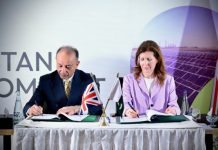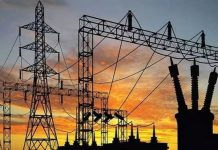ISLAMABAD: Power shortage persists in Pakistan, though electricity generation capacity of the country has increased by 11.5 percent during the current financial year, WealthPK reports.
During the first 10 months of the current fiscal, power generation in the country reached 41,557 megawatts as compared to 37,261 megawatts during the same period last year. The total demand for electricity in the country is just 28,400 megawatts while supply is around 21,000 megawatts.
During the first 10 months of the current fiscal, the oil import bill reached $17.03 billion as compared to $8.69 billion during the same period of the previous financial year.
Syed Mujahid Shah, a senior electrical engineer at National Engineering Services Pakistan, told WealthPK that power generation capacity was dependent on the source of energy. He said that wind power was dependent on the speed of air, solar power on heat, and hydropower on water.
“In the winter and dry seasons, Wapda has less water in its reservoirs and resultantly the power generation units are not able to generate electricity to their full capacity. For example, at Neelum Jhelum, Wapda has four power generation units but a lone unit works in dry season and the three remain idle. All the four units are operational only during the months of July, August and September. Same is the case of Tarbela and other hydropower plants,” he said.
The refurbishment of 243 megawatts Warsak hydropower plant and 1,000 megawatts Mangla hydropower plant is a major reason for the current power shortage in the country.
An official of Ministry of Energy and Power Division told WealthPK that electricity shortfall was a result of increase in the fuel import bills. In most of the cases, electricity in Pakistan is generated with the help of imported fuel including coal, petroleum and liquified natural gas, so the government has decided to increase the duration of the load shedding at the feeders where bill recovery is low or line losses are high.
The share of hydel as compared to other sources of fuel in the total power generation capacity reduced to 24.7 percent in the current fiscal from 26 percent in the previous financial year. The contribution of RLNG to the installed capacity increased to 23.8 percent from 19.7 percent in the previous year. The furnace oil’s share in the electricity generation is around 14.2 percent in Pakistan.
The share of coal in power generation remained unchanged while that of natural gas shrank from 12.15 percent to 8.5 percent in the current year.
The renewable energy sources are favoured by experts for the sake of economy and environment. The share of nuclear energy in generation of electricity increased to 8.8 percent in the current year from 6.68 percent of the previous year.
Likewise, the share of wind and solar energy in the country’s power generation reached 4.8 percent and 1.4 percent respectively in the current financial year.
Tauseef H. Farooqi, the chairman of National Electric Power Regulatory Authority, said that different entities in the country were defaulters of Rs650 billion in connection with electricity tariff. “It is necessary for the government to collect this money that will definitely help to minimise the circular debt, which amounts approximately $2.5 trillion. To minimise the line losses in the electricity system, the government must improve the infrastructure,” he said. –INP






